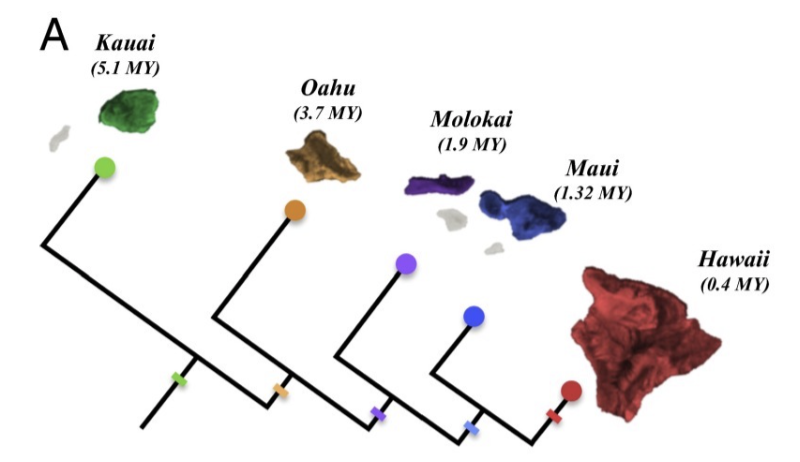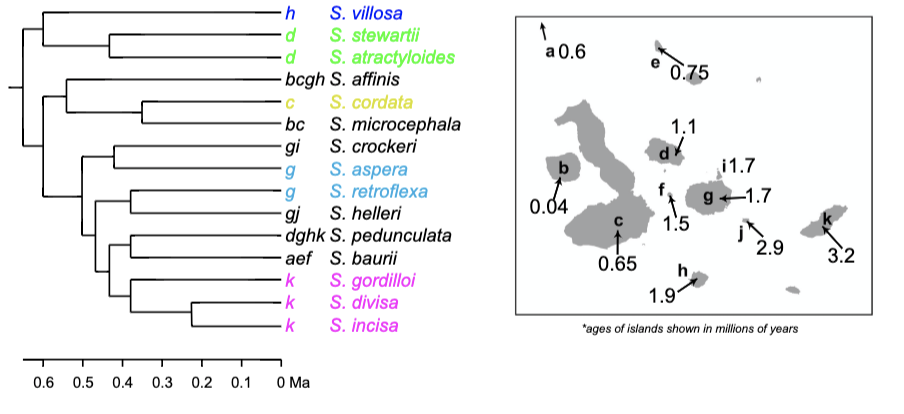The “Progression Rule” of biogeography states that the oldest islands of an archipelago will host the oldest lineages of a radiation and the youngest islands will host the youngest lineages. The Hawaiian islands offer a number of examples of progression, one of which is depicted below. First, do Darwin’s Giant Daisies follow the Progression Rule? Second, describe a historical process of diversification and dispersal that might be responsible for the pattern you actually observe for Scalesia. This needn’t be completely precise—I don’t want every dispersal event documented!—just sufficient to capture the general process. (as a hint, he told me to consider speciation, extinction, and/or dispersal as the historical processes)
Biogeography
The study of plants, animals, and other living things in terms of their geographic distribution is referred to as biogeography. Biogeography is usually examined in coexistence with ecological and historical variables that have affected organisms' spatial distribution across time. It is not only based on the habitation patterns; it is also about the reasons that cause differences in distribution. Biogeographic studies divide the Earth's surface into diverse flora and fauna compositions, notably the continents and islands. Biogeography is a field of science, but physical geographers have made vital commitments, especially in flora. Biogeography is a multidisciplinary field of study that combines concepts and data from ecology, evolutionary biology, taxonomy, geology, physical geography, paleontology, and climatology.
Types of Climate
The weather pattern in a long-term process in a locality, region, or even over the entire globe is known as climate. Generally, it is decided by calculating an average of thirty years' weather in a region. In that sense, the weather and climate are different.
Biome
It is defined as a definite community of animals and plants residing together in a climate. Each (plants and animals) having a characteristic appearance and distributed over a wide geographical area defined largely by regional climatic conditions.


Trending now
This is a popular solution!
Step by step
Solved in 3 steps


